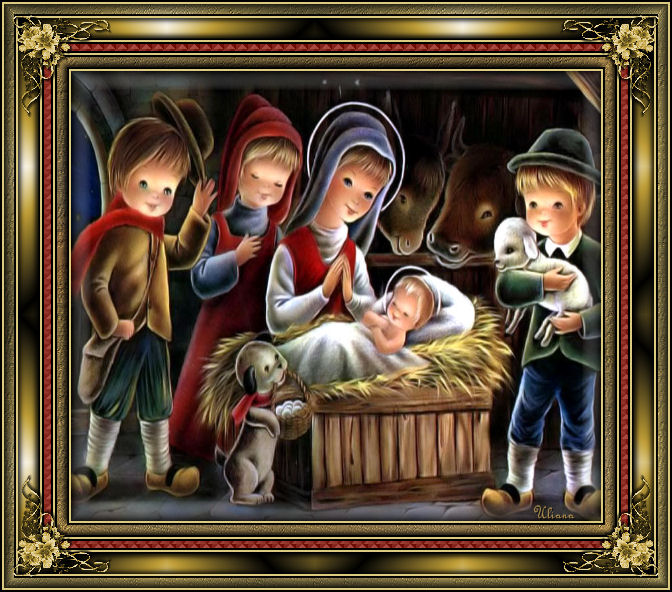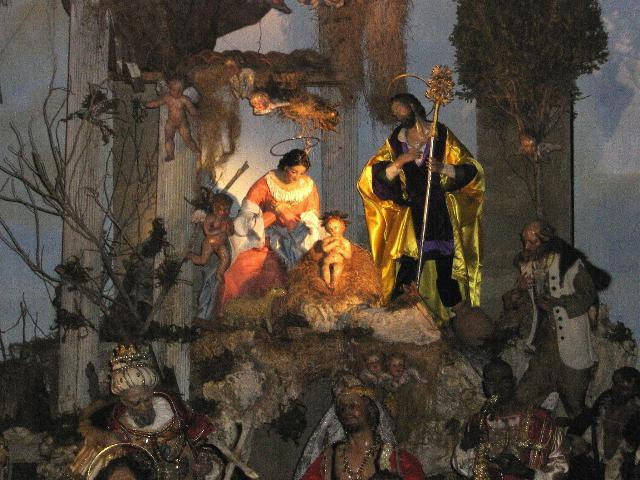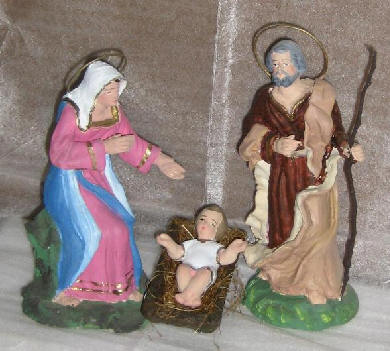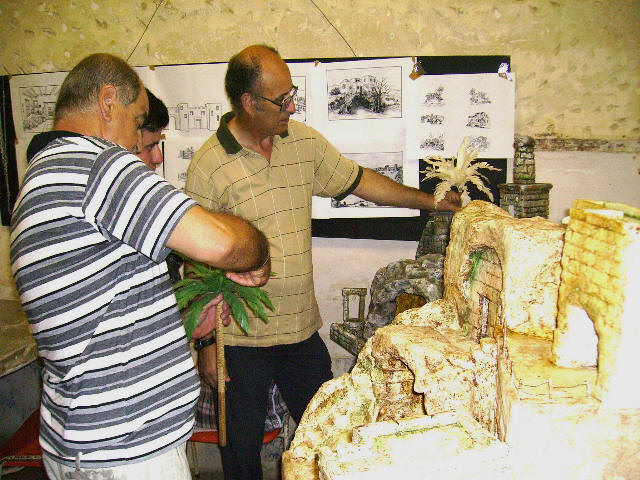 WELCOME
WELCOME
to the website of
the
FRIENDS
OF THE CRIB
–
Malta-.
In the few lines
that follow you will find a brief history about the evolution of the Christmas
Crib in
Malta and the setting up of our
Association in 1986.
Wherever Christmas is
celebrated, the CRIB forms part of the country’s tradition and our little island
is no exception.
As early as the month of October, statuettes, popularly known
in Malta as ‘pasturi’, are put up for sale in shops. The
word ‘pastur’ is derived from the Italian ‘PASTORE’ which means
shepherd. It is commonly known that shepherds were the first persons to
rush to the manger where Baby Jesus was born in Betlehem.
The idea of crib building originated in Italy where St
Francis of Assisi re-enacted
the Birth of Christ in the year 1223. From here it spread all over Europe and eventually the
World, each country adapting the crib to its own traditions, trades and style of
costumes.
Crib
building in Malta is said to have started in the first half of the seventeenth
century, and although no documentation could be found to prove it, it is known
that a crib used to be erected every Christmas at the Domenican Conventuals
Church in Rabat as early as 1617.
In St Peters Monastery in Mdina, one can still find a crib dating back to
1826. This crib is attributed to the works of Fra
Benedetto Papale, a Sicilian monk who lived in Malta around that time.
It
is
treasured by the Benedictine Sisters who live in the monastery. Towards
the middle of the nineteenth century, a certain Antonio Muscat Fenech from Qormi,
built a
 mechanical crib which he opened for public viewing in his garage.
Water dripping on fins attached to wheels used to turn wooden shafts which
in turn, activated the movements of the statuettes in the crib. Due to the
visiting crowds, the crib was kept open until February.
The
building of cribs in Malta was influenced mainly by the Neapolitan style which
was quite popular in Europe till the end of the last century. The
idea of having a Christmas crib at home
was introduced in Malta by local
noblemen who could afford to buy the
‘expensive’ statuettes at the time. The style did not represent much of a
‘Holy Night’ for the Maltese and therefore was not readily welcomed. It is
said that, as a protest, most of these cribs were burnt in winter fire in times
of poverty.
mechanical crib which he opened for public viewing in his garage.
Water dripping on fins attached to wheels used to turn wooden shafts which
in turn, activated the movements of the statuettes in the crib. Due to the
visiting crowds, the crib was kept open until February.
The
building of cribs in Malta was influenced mainly by the Neapolitan style which
was quite popular in Europe till the end of the last century. The
idea of having a Christmas crib at home
was introduced in Malta by local
noblemen who could afford to buy the
‘expensive’ statuettes at the time. The style did not represent much of a
‘Holy Night’ for the Maltese and therefore was not readily welcomed. It is
said that, as a protest, most of these cribs were burnt in winter fire in times
of poverty.
The Sicilian style of crib, was introduced in Malta by a Franciscan friar
from Sicily,
Benedetto Papale, who is known to have lived in Malta for some time
during the second half of the nineteenth century. One of
his cribs can still be seen in Modica, Sicily. This style was more
acceptable to the Maltese, perhaps due to the likeness between the Maltese and
Sicilian countryside depicted in the cribs. Even so, the Maltese crib
followed local traditions with regards to trades, costumes, musical instruments
and buildings which formed the crib. The Maltese farmhouse and flour
windmill still feature prominently in locally built cribs.
The building of cribs in Malta flourished during the
nineteenth and first part of the twentieth centuries. The media most
commonly used were rustic stone, very abundant in Maltese countryside, and coal
residue, commonly known as ‘gagazza’.
The latter was generally acquired from blacksmiths. These two media,
patiently built, formed the desired basic shape of the crib. After
Christmas they could be dismantled and stored away for the following year.
The introduction of modern fuels in furnaces did away with coal and therefore
the supply of ‘gagazza’ became very remote, while the use of stone
was rather cumbersome. So crib enthusiasts turned to another medium,
papier mache. This made cribs more solid and lightweight; however it
presented a problem of storage. For this reason, cribs were very often
destroyed after Christmas
Another interesting aspect of the Crib is the evolution of the statuettes or
‘pasturi’. The first artistic figurines were rather expensive and
therefore beyond the ordinary man’s reach. So he devised his own method of
making ‘pasturi’. Using earth clay, he shaped what looked like very
rugged figures. Paint helped to define the face, hands and clothes.
 More enterprising, if not talented persons, created plaster moulds into which
soft earth clay was pressed to produce figurines. These were produced in
large numbers and sold for a ‘penny’ (today it would be
More enterprising, if not talented persons, created plaster moulds into which
soft earth clay was pressed to produce figurines. These were produced in
large numbers and sold for a ‘penny’ (today it would be
Towards the middle of the 20th Century, and particularly after the
end of World War II, new customs and traditions were brought into Malta from
abroad. Local traditions and folklore were pushed aside. Both in Malta and
abroad, the Crib became just another Christmas decoration and due to the work
required in its building, it lost its popularity to make way for the Christmas
tree and other easy to mount decorations. The mass production of plastic
figurines, dressed in contemporary clothes and painted in bright styles,
which looked more like miniature dolls or puppets,
lacked
the prestige of the individually made 'pastur'
and helped to deteriorate the
tradition even more.
In the year 1907, the Society for Religious Doctrine, known as
M.U.S.E.U.M., was set up. Urged by its motto, ‘VERBUM DEI
CARO FACTUM EST’, which means: ‘The Word of God was made Man’, this
Society, under the leadership of its founder, Saint George Preca, made it its
task to re-kindle the love for the real Christmas. Each December, children
were given a replica of Baby Jesus or a small crib as a gift. Another
initiative of this Society was the holding of a procession on Christmas Eve
during which a life-size replica of Baby Jesus was carried by members of the
society while religious Christmas carols were sung. The first of these
processions was held in 1921. Such processions still form part of the
Christmas Eve scene in Malta’s towns and villages.
The crib building tradition in Malta was also kept alive by a few enthusiasts
who built sizeable cribs and exhibited them to the public. It was thanks
to these persons that the custom of crib building in Malta did not vanish
altogether.
In 1986, a group of Crib enthusiasts got together and formed the ‘ASSOCIATION
OF THE
FRIENDS OF
THE CRIB
’. The scope of the group was specific: to keep
the crib tradition in Malta alive.
During the years that followed,
the Association managed to re-kindle the love for the Crib and to
attract no less than three hundred active members. During the year, even
when Christmas is still ‘far away’, members of the Association
get together to
discuss various aspects of the crib, listen to lectures about the history of the
crib in Malta and abroad and also watch demonstrations on crib
building given by the older members of the Association. Various techniques,
materials and styles are shown and discussed. Practical sessions, where
members start building their, perhaps, first crib, are organized and heavily
attended especially by new members.
years that followed,
the Association managed to re-kindle the love for the Crib and to
attract no less than three hundred active members. During the year, even
when Christmas is still ‘far away’, members of the Association
get together to
discuss various aspects of the crib, listen to lectures about the history of the
crib in Malta and abroad and also watch demonstrations on crib
building given by the older members of the Association. Various techniques,
materials and styles are shown and discussed. Practical sessions, where
members start building their, perhaps, first crib, are organized and heavily
attended especially by new members.
Every year, during the weeks preceding Christmas, the Friends of the Crib hold
an exhibition of works by their members. About one hundred cribs of
various shapes and sizes made from different media such as papier mache,
polystyrene, cork, etc., are put together to offer visitors, locals and tourists
alike, the true story of Christmas, THE BIRTH OF BABY JESUS.
While thanking you for visiting our site, we hope to welcome you to our show in
Valletta, Malta during a future
Christmas Season.
 In the meantime we invite you to enjoy
In the meantime we invite you to enjoy
our gallery of cribs
by
clicking
the
small book on the left.
